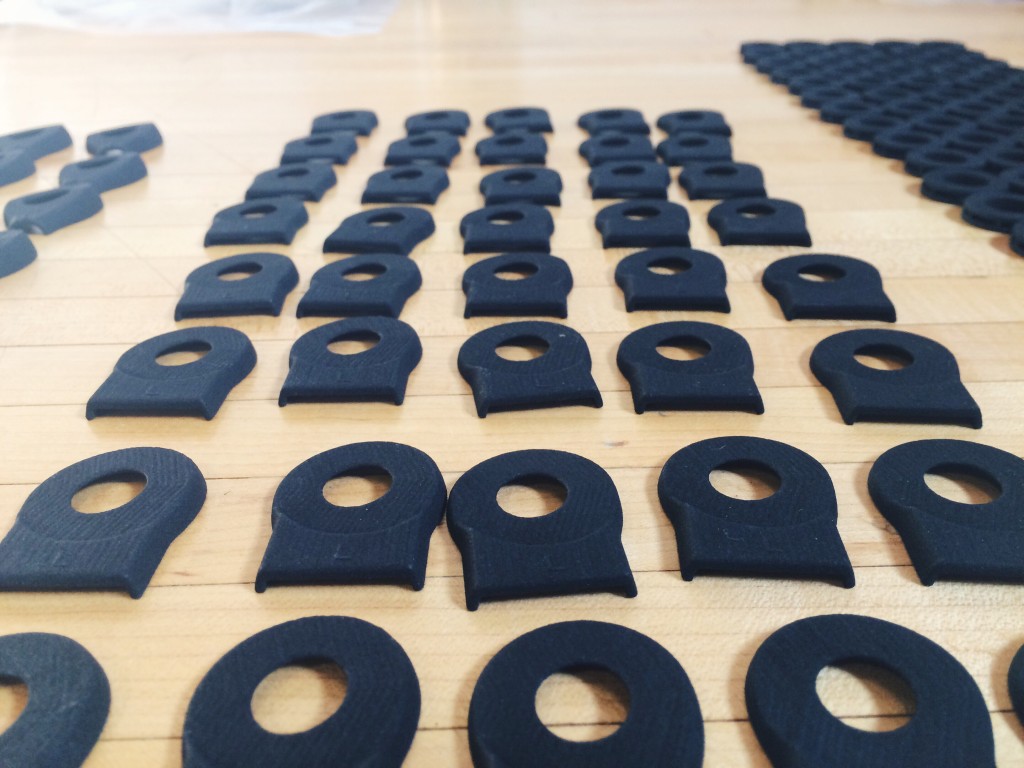You’ve probably heard. Many companies have switched over from traditional manufacturing, thrilled about the way 3D printing has streamlined their production processes. But those who are still warming up to 3D printing may have their reservations about how it can be used for end-use parts. Are the materials strong enough to create a durable part? Will the parts look professional? Is it really cost-effective? These are good questions to ask since quality and price are central to purchasing decisions.
Today, additive manufacturing, or 3D printing, is an excellent alternative to traditional manufacturing in a variety of situations. You can get durable, professionally finished parts, simplify the design process, gain better control of your inventory, and save a lot of money.
1. Rapid turnaround
Traditional manufacturing is a time-intensive process. Simple molds can often be completed in a few weeks, while more complex molds tend to take several months. On top of that, if you change your design, you have to wait out the tooling process again, which makes it hard to operate flexibly. In a sense, having 3D printing at your service makes you lighter on your feet and quicker to pivot, enabling you to respond to consumer demand, unforeseen market challenges, and technological developments.
2. Comparatively low costs
While 3D printing can absolutely cut costs compared to traditional manufacturing, it’s important to understand how 3D printing saves you money, and that it isn’t always more affordable. It really depends on your needs. The primary ways that you save money with 3D printing are through circumventing tooling costs—making product development significantly more affordable and low volume production a viable option. Depending on the functional use of your product, you may also save money on materials.
In addition, if you end up needing to adjust your product, traditional manufacturing requires that you pay expensive injection molding costs all over again. Using 3D printing for production, you don’t pay to change your product—except for any cost associated with creating a new CAD model of course. You pay for volume, not complexity or variety.
3. Production-grade materials
Obviously, 3D printing would be no good for end-use parts if the materials couldn’t withstand normal use and even extreme conditions like high temperatures. That’s what makes thermoplastics like nylon so great. Nylon is one of the most popular printing materials for production-level parts because it’s strong, flexible, and highly tolerant to heat. You can also use different composites to achieve other product characteristics. For example, carbon-fiber and glass-filled nylon composites are popular among products built with SLS.
4. Highly controlled inventory
Predicting and managing inventory is a major task for any company. Excess inventory can absorb valuable space and capital, while lacking the proper inventory can cost sales and credibility. This is where 3D printing becomes extremely helpful, allowing businesses to control their inventory like never before. 3D printing allows suppliers in numerous industries to order additional parts very quickly, and in specific numbers. In addition to rapid manufacturing and custom order quantities, 3D printing enables companies to redesign or change their parts spontaneously, based on market needs.
5. Flexible volume
Most of the time, in order to have tooling done for your product, companies set specific volume requirements before they will make your molds. And it makes sense. Every business sector has to determine how to maintain their desired profitability based on their own technology and labor. The setback for designers and innovators is that they’re sometimes required to order a significantly higher volume of product than they need. They will certainly hope to sell all that product to make it worth the initial cost.
6. Simple or no assembly
Another reason business prefer to use 3D printing for production is that it often eliminates or reduces the need for assembly. Selective laser sintering (SLS) is a 3D printing method that prints objects in powder, creating a reliable support structure that enables parts to be built “inside of each other” without touching. You can imagine how this could eliminate the need for printing and assembling separate parts, instead allowing for the printing of functional products. Some fun and impressive examples include the 3D-printed cube with 28 working gears, and the fully assembled wind-up car, both printed using selective laser sintering and requiring no assembly at all. Whether you escape assembly altogether or simply create stronger designs with fewer pieces, designing for 3D printing is unique and opens up a world of experimentation and new possibilities in product development.
7. Domestic Production
People love to buy local products. If your product is affordable and made in the USA, this can help create brand loyalty and also give you better communication during the production process. Manufacturing is a totally different game when you can do it yourself or call up your manufacturer with questions and insights.
As you can see, 3D printing has created some amazing possibilities in the realm of manufacturing, making it an excellent alternative not only for prototypes but also for final production. If you have any questions about the technology or if 3D printing is right for your project, call us up and we’ll gladly give you a free consultation.
Happy printing,

